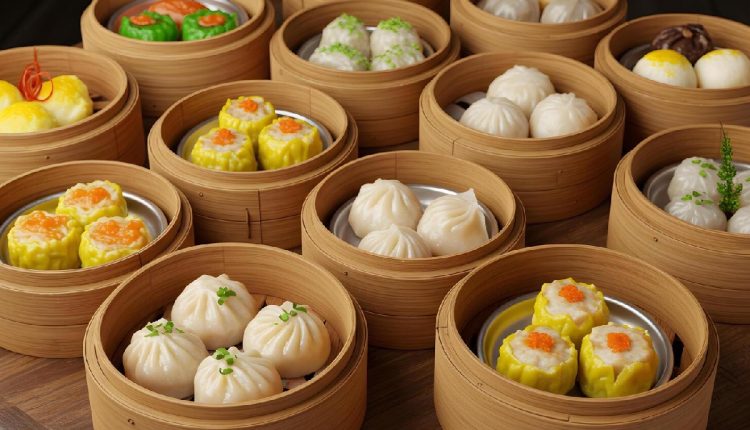Small Plates, Big Flavor
In the heart of every bustling Chinese teahouse, bamboo steamers lift their lids to reveal a world of culinary magic — Dim Sum. These bite-sized delicacies, served in small portions and bursting with flavor, represent more than food; they are an experience, a ritual, and a reflection of Chinese culture’s rich culinary heritage.
What is Dim Sum?
Dim sum (點心), which translates to “touch the heart,” is a collection of small dishes that include dumplings, buns, rolls, and sweets. Originally served with tea, dim sum has grown into a global phenomenon enjoyed in both casual eateries and upscale restaurants.
Traditionally part of the yum cha (tea drinking) culture, dim sum is more than a meal — it’s a social gathering.
A Historical Peek: The Origin of Dim Sum
Dim sum traces its roots to Guangdong (Canton) Province during the Song Dynasty (960–1279 AD). It was born in tea houses along the Silk Road, where weary travelers stopped for rest and nourishment.
Eventually, the concept of pairing tea with light snacks took off in southern China and evolved into the elaborate dim sum meals we know today.
Types of Dim Sum You Must Try
Har Gow (Shrimp Dumplings)
Translucent wrappers filled with tender shrimp. A delicate balance of chew and crunch.
Siu Mai (Pork & Shrimp Dumplings)
Open-topped dumplings steamed to juicy perfection. Often topped with roe or mushroom.
Char Siu Bao (BBQ Pork Buns)
Fluffy, steamed buns filled with sweet-savory barbecue pork. Pure comfort food.
Cheong Fun (Rice Noodle Rolls)
Silky rice noodle sheets rolled with shrimp, pork, or veggies, drizzled with soy sauce.
Turnip Cake
Crispy on the outside, soft on the inside — made with shredded radish and rice flour.
Egg Tarts
A sweet end to the meal. Buttery crust filled with smooth, warm custard.
How Dim Sum is Served
Dim sum is usually served in round bamboo steamers and brought around the restaurant on rolling carts, allowing guests to pick what they want. Each table builds its own customized meal by choosing dishes as they pass by.
It’s a communal, shared experience — best enjoyed in groups where everyone can try a little of everything.
Dim Sum Etiquette: A Guide for First-Timers
-
Pour tea for others before yourself. It’s a sign of respect.
-
Tap two fingers on the table to say “thank you” when someone pours tea for you.
-
Start with lighter dishes and move on to heavier, fried items.
-
Don’t over-order. Dim sum is meant to be enjoyed slowly and socially.
-
Always use the communal chopsticks or spoon when serving others.
Modern Dim Sum Trends Around the World
Dim sum has evolved far beyond traditional settings:
-
In the USA, creative spins include truffle siu mai and lobster har gow.
-
In Australia, vegan and gluten-free dim sum are growing in popularity.
-
In India, Indo-Chinese dim sum incorporates spicy paneer and schezwan sauce.
-
In Europe, dim sum is featured in gourmet tasting menus.
Chefs are merging East and West, but always maintaining the heart of dim sum: carefully crafted bites that delight.
Conclusion: Tiny Dishes, Timeless Culture
Dim sum isn’t just a meal — it’s an art form, a social ritual, and a cultural treasure. With its variety of flavors, textures, and aromas, dim sum offers something for everyone. Whether you’re a seasoned dim sum diner or a curious beginner, one thing is certain: every small bite leaves a big impression.


Comments are closed.